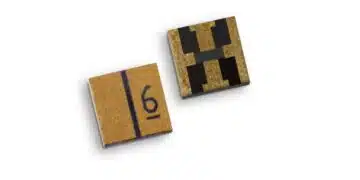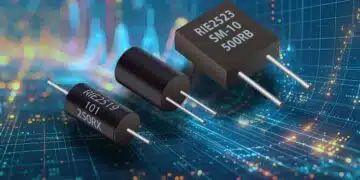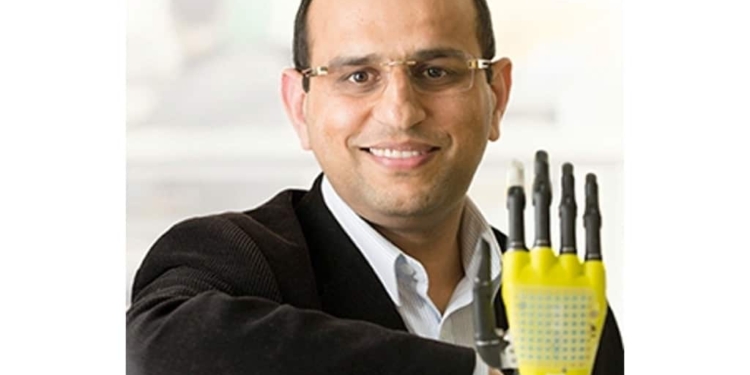Source: University of Glasgow news
A breakthrough in energy storage technology could bring a new generation of flexible electronic devices to life, including solar-powered prosthetics for amputees. In a new paper published in the journal Advanced Science, a team of engineers from the University of Glasgow discuss how they have used layers of graphene and polyurethane to create a flexible supercapacitor which can generate power from the sun and store excess energy for later use.
They demonstrate the effectiveness of their new material by powering a series of devices, including a string of 84 power-hungry LEDs and the high-torque motors in a prosthetic hand, allowing it to grasp a series of objects.
The research towards energy autonomous e-skin and wearables is the latest development from the University of Glasgow’s Bendable Electronics and Sensing Technologies (BEST) research group, led by Professor Ravinder Dahiya.
The top touch sensitive layer developed by the BEST group researchers is made from graphene, a highly flexible, transparent ‘super-material’ form of carbon layers just one atom thick.
Sunlight which passes through the top layer of graphene is used to generate power via a layer of flexible photovoltaic cells below. Any surplus power is stored in a newly-developed supercapacitor, made from a graphite-polyurethane composite.
The team worked to develop a ratio of graphite to polyurethane which provides a relatively large, electroactive surface area where power-generating chemical reactions can take place, creating an energy-dense flexible supercapacitor which can be charged and discharged very quickly.
Similar supercapacitors developed previously have delivered voltages of one volt or less, making single supercapacitors largely unsuited for powering many electronic devices. The team’s new supercapacitor can deliver 2.5 volts, making it more suited for many common applications.
In laboratory tests, the supercapacitor has been powered, discharged and powered again 15,000 times with no significant loss in its ability to store the power it generates.
Professor Ravinder Dahiya, Professor of Electronics and Nanoengineering at the University of Glasgow’s School of Engineering, who led this research said: “This is the latest development in a string of successes we’ve had in creating flexible, graphene based devices which are capable of powering themselves from sunlight.
“Our previous generation of flexible e-skin needed around 20 nanowatts per square centimetre for its operation, which is so low that we were getting surplus energy even with the lowest-quality photovoltaic cells on the market.
“We were keen to see what we could do to capture that extra energy and store it for use at a later time, but we weren’t satisfied with current types of energy storages devices such as batteries to do the job, as they are often heavy, non-flexible, prone to getting hot, and slow to charge.
“Our new flexible supercapacitor, which is made from inexpensive materials, takes us some distance towards our ultimate goal of creating entirely self-sufficient flexible, solar-powered devices which can store the power they generate.
“There’s huge potential for devices such as prosthetics, wearable health monitors, and electric vehicles which incorporate this technology, and we’re keen to continue refining and improving the breakthroughs we’ve made already in this field.”
The team’s paper, titled ‘Graphene-Graphite Polyurethane Composites based High-Energy Density Flexible Supercapacitors’, is published in Advanced Science. The research was funded by the Engineering and Physical Sciences Research Council (EPSRC).































